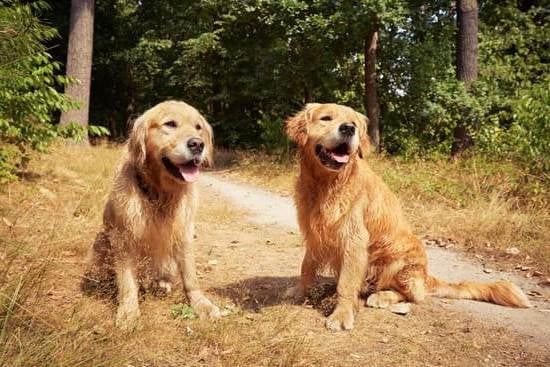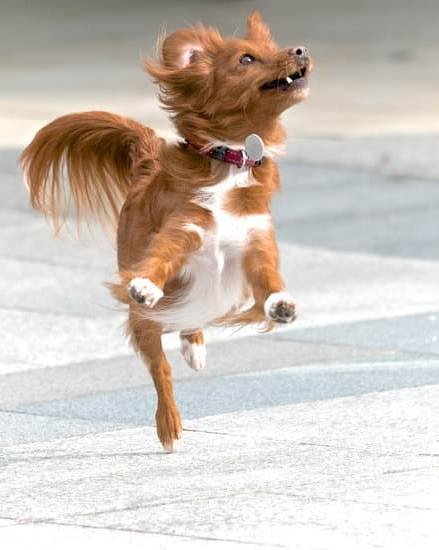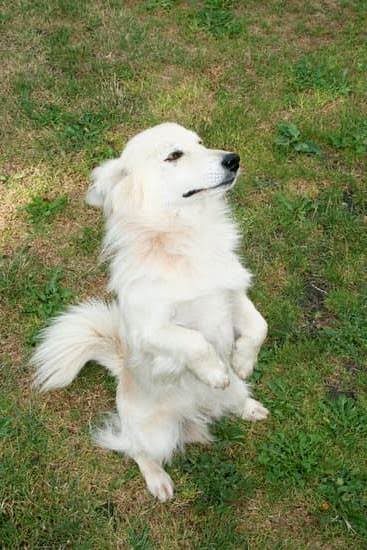Introduction What Litter Training is and the Benefits for Your Dog
Litter training is a process through which your dog is taught to do their business in a designated spot instead of random places. To litter train your pup, place them in a special container filled with absorbent materials such as puppy pads or newspaper that can soak up any messes they make. Once they get used to the idea of going in one particular spot, gradually introduce regular clumping, flushing, or composting litter and encourage them to use it by rewarding them when they do.
Benefits of litter training include helping to reduce odors in the home, making it easier for you to clean up after your dog, and providing an alternative if you don’t have access to outdoor spaces for your pup or for when the weather isn’t suitable for taking them out. Additionally, keeping dogs confined to certain areas limits their ability to shed fur over carpets and furniture throughout your home and gives them more control over their environment. When done correctly, litter training is not only comfortable for both you and your pet but also provides positive reinforcement opportunities too!
Assessing Your Dog’s Behavioral Cues
When it comes to litter training, it is important to assess your dog’s behavioral cues. You will need to observe your pup and note their behaviors when they are about to eliminate. Some dogs may naturally display these behaviors much more clearly than others, so be sure to pay close attention. Does your dog circle or sniff around a certain area? Do they suddenly become restless or start pacing? These types of behaviors are potential signs that your pet needs to do their business. Once you recognize these cues, the choice of where you want them to go becomes much clearer. Additionally, once you know the types of signals that need to be addressed for toilet training, you can begin implementing different techniques such as reward-based positive reinforcement and consistent scheduling.
Exploring Available Litter Types and Preparing the Training Area
Yes, you can litter train your dog. The most important thing when it comes to litter-training a dog is to select the right type of litter. Options include clay-based kitty litter, wood pellets, grass litter, and even shredded paper. Once you’ve selected a suitable type of litter for the job, it’s time to properly prepare the training area. This should be located in an unoccupied room or corner of the house and should be large enough for your pup to fit comfortably inside. Place your chosen type of litter within this designated space and create a shallow tray or pan where they can eliminate without making too much mess around their environment. You may also want to include mats near the towel box where your pup can rest and relax after using the bathroom. Have patience with your pup as they learn how to use their new bathroom area – this process could take up several days or weeks depending on the individual’s age and temperament.
Introducing the Litterbox
Yes, you can litter train your dog. Litter training is a great way to keep your house clean and reduce waste in landfills. It does take some commitment and planning, but it is entirely possible for any breed of dog. The first step in litter training is to purchase a litter box that fits the needs of your pet. There are many sizes and styles available, so make sure you choose one that will be comfortable for your canine friend. You may need to purchase a special type of litter designed specifically for dogs as well as puppy pads or other absorbent materials to put inside the box.
Once you have the right equipment, it’s time to start training. Start by placing the litterbox in an area where there is enough space and light for your dog to get comfortable using it. Place treats nearby the box and allow your puppy some time to explore it on their own. After they’ve been comfortable with the littlerbox for a while, take them over and encourage them with vocal cues like “use the bathroom.” When they show interest in entering their new facility then reward them with lots of verbal praise and treats every time they use it correctly. If necessary, use different tactics such as leading them into the litterbox by hand or gently shoving them from behind in order to get them used to its presence quicker. With practice, patience, and plenty of rewards – your pet can learn to do their business exclusively indoors!
Understanding the Process for Success
Yes, you can litter train your dog! It is most effective with small breeds such as Yorkshire terriers, chihuahuas, and Pomeranians. The basic approach to litter training a dog is to use reward-based conditioning and positive reinforcement techniques. First, choose a spot for the litter box that is easily accessible for your pup. Place treats or toys in the box to help create an enjoyable experience. Every time your pup visits the litter box, reward them with treats or affection. Be consistent – don’t forget to reward them each time they use the box! You also need to be aware of your pup’s behavior; if they start to try and go in places other than the designated box, pick them up and carry them there. Remember – if you are patient and consistent, you will eventually see progress in no time!
Avoiding Common Mistakes for Quicker Results
Yes, you can litter train your dog. To do this effectively and efficiently, it is important to avoid some common mistakes. First, never reprimand your pup for making a mess outside the designated litter area; instead use positive reinforcement such as treats or praise when he succeeds in using the designated spot. Furthermore, keep the litter area free from distraction and set scheduled times for him to relieve himself in the correct spot; dogs are creatures of habit and need to develop a routine in order for them to learn quicker. Additionally, do not yell at your puppy if he has an accident; instead calmly move him to his litter area after he is done so that he associates going there with relieving himself. Finally, clean up any mess that your pup makes promptly and properly so that odors don’t attract his attention back to an undesired location. By following these steps you can help ensure that you are able to quickly and successfully litter train your dog.
Making the Commitment to Long Term Training
Yes, you can absolutely litter train your dog. It takes commitment and patience to achieve positive results, but it is possible. You’ll need to choose the right type of litter box for your breed, size and age of your dog, and design a plan for achieving success. You’ll want to start by giving your pup their own designated space or area to use as their bathroom and begin positive reinforcement training such as rewards each time the pup uses their litter box correctly. You should also immediately clean up any messes outside the litter box and avoid punishing your dog when they make mistakes since this may have an adverse effect on their progress. Provide plenty of playtime outdoors so that they can be encouraged to relieve themselves there while being supervised. Finally, block access to other sections of the house until they have learned indoor/litter-box etiquette and congratulate them on a job well done whenever they succeed!
Answering Common Questions About Litter Training Your Dog
Yes, you can litter train your dog! While cats seem to naturally understand how to use litter boxes, this isn’t always the case for dogs. The key is consistency and patience. There are plenty of techniques you can use including crate training and positive reinforcement.
When it comes to crate training, it’s important to remember that the goal is not to shut your dog away in a cage, but instead create a space that they can feel comfortable in while they get used to using their bathroom spot. Start by placing the litter box in an area where your pup spends the most time, then place some treats near it and let them explore what notices. Praise them when they sniff around the box or start pawing at it – this could be a sign that they’re interested. Place treats in the box or mix something such as cereal in with the litter so that they have a reward when they go inside. You should also ensure that you clean up any messes quickly so that your pup doesn’t start associating those areas with potty habits.
Positive reinforcement is also important when teaching your dog to use their bathroom spot. Every time they go into the designated area, be sure to give them lots of praises and treats as rewards. This will help them associate going potty with something good! Keeping their bathroom routine consistent is also important, take them to their area immediately after meals or playtime so that they become accustomed to going there when needed.
Resources to Help Train Your Dog
Yes, it is possible to litter train your dog. It is a relatively straightforward process and can be beneficial for both the owner and the pet. To start with, you’ll need to invest in a good quality Dog Litter Box – these are designed specifically for dogs, so make sure whatever you buy is suitable for their size. Next, pay careful attention to your dog’s behaviour and incidences of urination or defecation inside your home – if your pup begins to liquify an area as a regular habit, mark it as an appropriate spot for their litter box. Praise them when they use it correctly, while providing positive reinforcement whenever possible. Provide rewards such as treats or a toy when they get it right. Finally, set up a regular schedule of when and where the box should be used – consistency will help them learn quickly and adapt more easily. With patience and dedication, you should eventually be able to successfully litter train your pup!
Conclusion Celebrating Positive Results and Further Advice
Yes, you can litter train your dog! With a bit of patience and dedication, it is entirely possible for your pup to learn the basics. As with any new behavior, reinforcing positive outcomes and guaranteeing rewards will ensure steady progress with each successive lesson. Make sure you stay patient and consistent throughout the training process; this will be essential to your dog’s learning success. During the training period, remember to provide plenty of praise and treats when your pup gets it right! Also, make sure to accommodate your pet’s preferences- some dogs may find flatter or covered litter boxes preferable. Additionally, keep an eye out for any signs of stress (e.g., barking or scratching), as these behaviors are not ideal for teaching good habits. Good luck!

Welcome to the blog! I am a professional dog trainer and have been working with dogs for many years. In this blog, I will be discussing various topics related to dog training, including tips, tricks, and advice. I hope you find this information helpful and informative. Thanks for reading!





